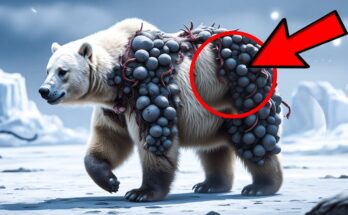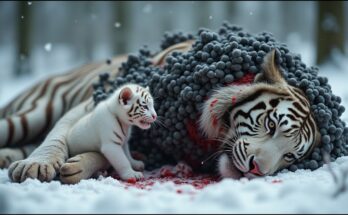In the icy expanse of the Arctic, a distressing sight captured the attention of an Arctic rescue team conducting research on melting ice. A young polar bear cub, barely old enough to fend for itself, was spotted struggling across the frozen tundra. Its snow-white fur was obscured by clusters of barnacles clinging to its tiny body, weighing it down and impeding its movement. The cub’s plight was both unusual and heartbreaking; the team had never seen barnacles attach themselves to a land animal before. They speculated that the cub had wandered into an oil-drenched area of the ocean, where the sticky residue allowed the barnacles to latch onto its fur.
Realizing the cub’s life was in danger, the rescue team sprang into action. Using specialized equipment and tranquilizers to ensure the cub’s safety, they carefully approached the frightened animal. After tranquilizing the cub, they brought it aboard their vessel, where the challenging task of removing the barnacles began.
Each barnacle had to be removed painstakingly by hand, as they were deeply embedded in the cub’s fur and skin. The process took hours, but the team worked tirelessly, their efforts fueled by compassion for the struggling animal. The barnacles were not just a burden; they had caused sores and infections, which the team treated with antibiotics and soothing ointments.
After the rescue, the cub was monitored in a rehabilitation center, where it regained its strength and playful demeanor. Once deemed healthy, it was released back into the wild, free of its burden. The rescue team watched as the cub bounded across the ice, its movements swift and unencumbered. The incident highlighted the profound impact humans can have on wildlife conservation, proving that courage and compassion can make a difference, even in the harshest corners of the Earth.
4o


